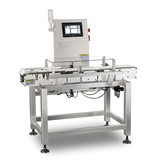Rising petrol costs not only have an effect on consumers and flow-on effects into the retail sector, but also for businesses, particularly manufacturers, as the price of diesel also increases.
Political tension in the Middle East and the recent tsunami in Japan are largely driving up current prices. Countries such as Libya, one of the world’s major oil producers, is also experiencing civil unrest.
All these world events are pushing up petrol prices in Australia to its highest levels since October 2008.
Manufacturers are hit with these increases from several directions – freight costs associated with transporting their products to and from their warehouse; freight costs associated with suppliers and other businesses they deal with; and general day-to-day costs, such as visiting clients.
Allplastics, which specialises in the machining, fabrication and supply of thermoplastic materials, has not yet witnessed any impacts on its business due to increased petrol prices – but it is certainly something which is on the horizon.
"Freight companies are putting up their pricing and there are also indications that a lot of the polymers that are used in the production of plastics might be going up. But we’re not certain by the percentage yet," Vic Kalloghlian, managing director at Allplastics, said.
There are two ways manufacturers will be able to deal with increased petrol prices – absorb the costs into their own company or pass on the costs to customers through higher prices.
"We try and pass that on, but we can’t do it in every instance. There are certain long-term agreements and contracts that we have entered into, so sometimes it’s difficult to pass that on immediately," Kalloghlian said.
"We’ve had signals in the last three years of huge increases, but it hasn’t materialised because of market pressures, or the GFC might have had something to do with it.
"There’s also the fact that the Australian dollar is high, which make price increases a bit more absorbable, but we don’t know for how long."
He expects customers will see price increases within the next two to three months.
Core business activities are also at risk. Client visits are an integral part of many businesses. At this point in time, Kalloghlian says the frequency of client visits hasn’t changed, but it is something which will be reviewed: "depending on the percentage that petrol prices have gone up by. Travelling around or sending things out for free – it wouldn’t be as easy as it used to be," he said.
"We need to be vigilant of the costs associated with the delivery of things and going and visiting clients on a regular basis. You wouldn’t just visit a client to say hello – you would have to have a very good reason to go and see them."
Although petrol prices could potentially fall, there is every indication that they will steadily climb into the future.
"We’ve seen mainly freight prices increase. Suppliers have passed on or signaled there will be freight price increases starting from next month and the month after," Kalloghlian said.
There are two ways manufacturers will be able to deal with increased petrol prices – absorb the costs into their own company or pass on the costs to customers through higher prices.
"We try and pass that on, but we can’t do it in every instance. There are certain long-term agreements and contracts that we have entered into, so sometimes it’s difficult to pass that on immediately," Kalloghlian said.
"We’ve had signals in the last three years of huge increases, but it hasn’t materialised because of market pressures, or the GFC might have had something to do with it.
"There’s also the fact that the Australian dollar is high, which make price increases a bit more absorbable, but we don’t know for how long."
He expects customers will see price increases within the next two to three months.
Core business activities are also at risk. Client visits are an integral part of many businesses. At this point in time, Kalloghlian says the frequency of client visits hasn’t changed, but it is something which will be reviewed: "depending on the percentage that petrol prices have gone up by. Travelling around or sending things out for free – it wouldn’t be as easy as it used to be," he said.
"We need to be vigilant of the costs associated with the delivery of things and going and visiting clients on a regular basis. You wouldn’t just visit a client to say hello – you would have to have a very good reason to go and see them."
Although petrol prices could potentially fall, there is every indication that they will steadily climb into the future.
"We’ve seen mainly freight prices increase. Suppliers have passed on or signaled there will be freight price increases starting from next month and the month after," Kalloghlian said.











-160x160-state_article-rel-cat.png)






